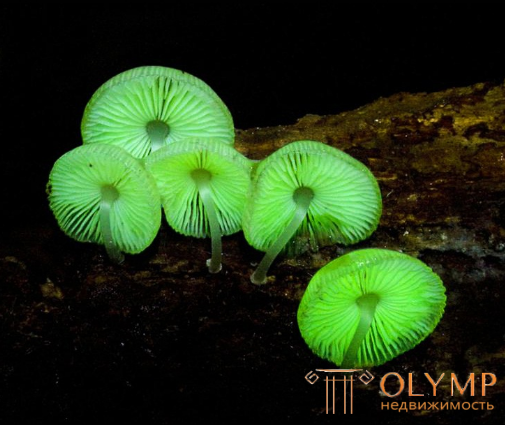
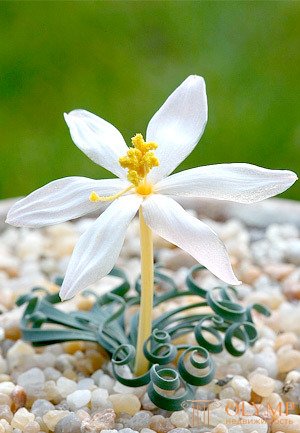
No, this is not a pipe cleaning cable stuck in a pot. And not aliens have forgotten him on the planet. Trachyandra came to us from Southeast Africa.
Grows up to 20 cm tall, shows yellow-green buds during flowering.
Funny, similar to a rag ball, it grows up to 15 centimeters in diameter. Perfectly retains moisture during the drought.
Medusa Gorgon, of course. Initially, this serpentine plant lived in the Cape Town region, in Young Africa.
He is an "antler". Very beautiful view of the fern.
Or "fiery bush". It can grow up to 7 meters and is not suitable if you have small children or pets due to poisonous compounds in the stems.
It has the property to spread with the persistence of a weed, therefore it is planted in open ground only in pots.
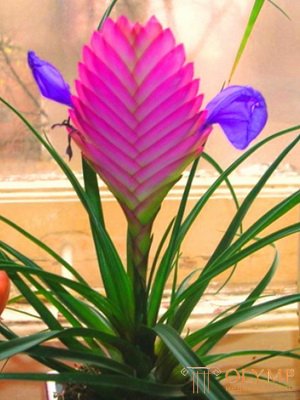
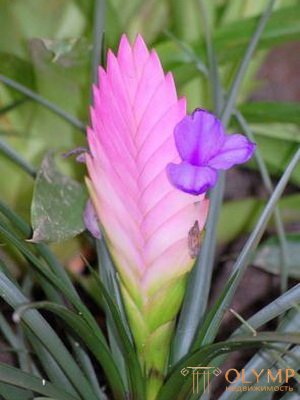
Tillandsia blue (T. cyanea), usneoid (T. usneoides) and protruding (T. stricta) are also common in the culture.
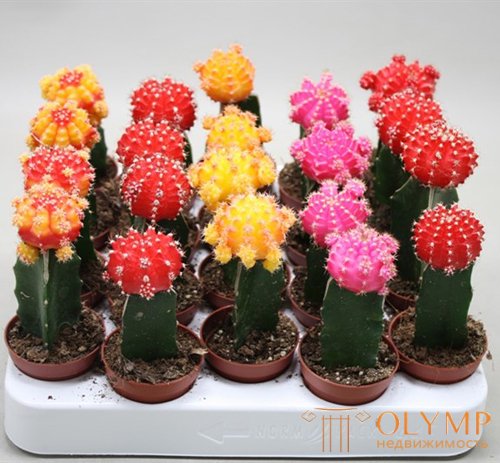
Hymocalicia bloom, with the exception of a few species, ranging from two to three years old. Buds appear from the areola, located at the top of the plant. The flowers are white, greyish, greenish, yellow, pink, red, bell-funnel-shaped, 3-10 cm long and in diameter. Fruits are gray-green, with a reddish or bluish tint, oval, up to 4 cm long and 2 cm in diameter.
Care: Gymnocalyciums are very simple for home breeding, undemanding to the substrate, insensitive to excess moisture and lack of sunlight. They are beautiful, they bloom easily and for a long time, that is why they are especially loved by cactuses.
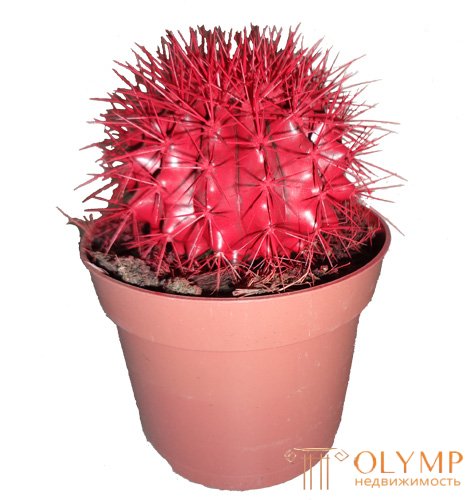
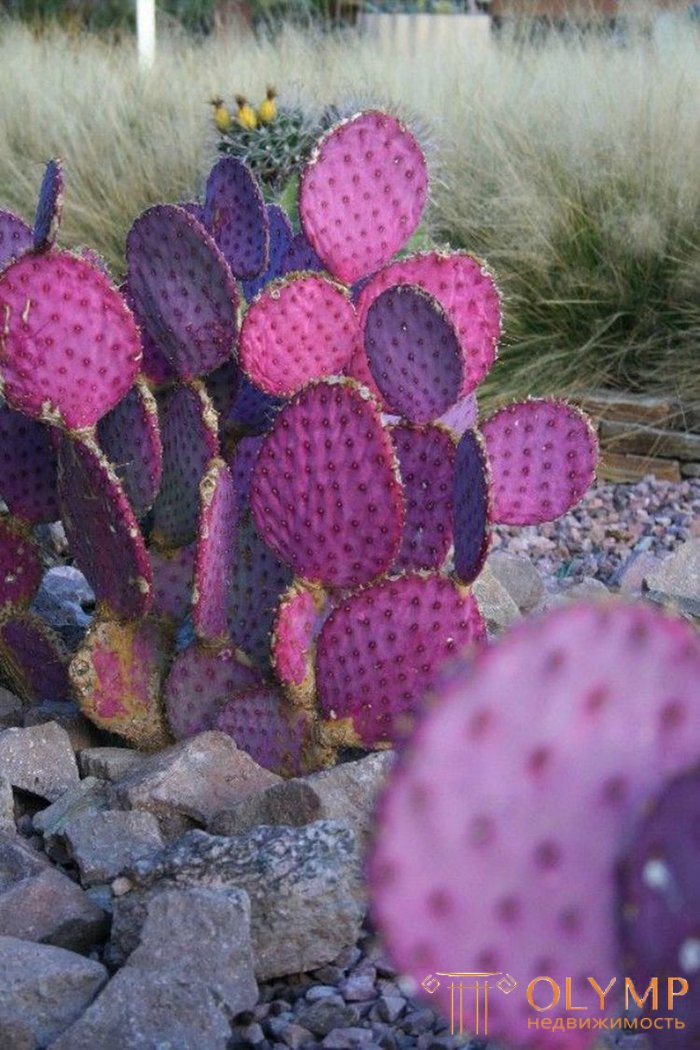
Heliconia fully justifies the whole range of its unusual names. The guest from the humid tropics of South America is very fastidious, and in order to grow it, oh, how to try. There is even a saying that it grows "only among successful people."
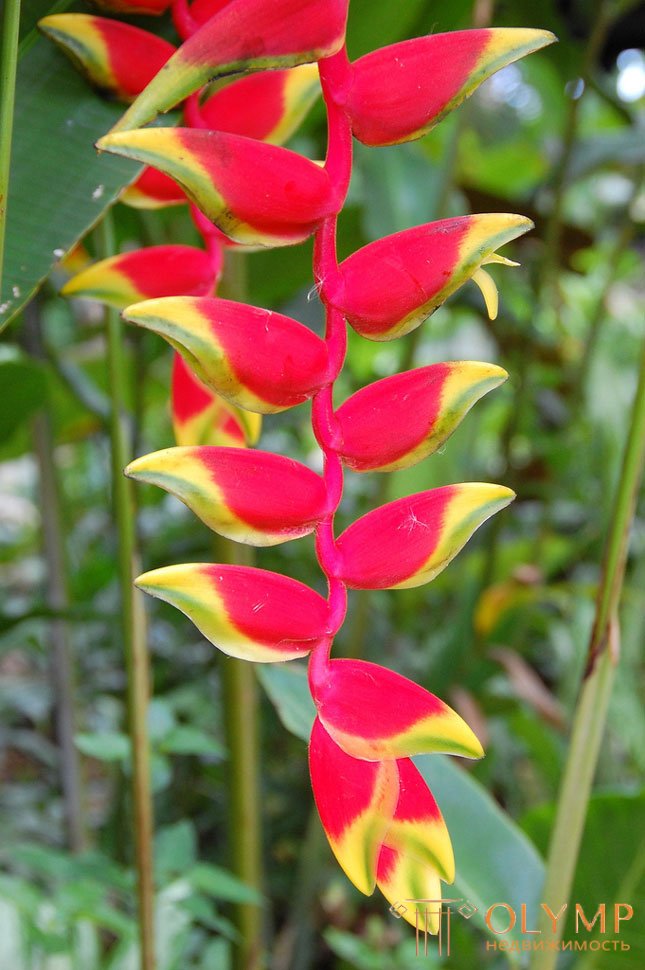
Unique plants for a unique design solution - hanging gardens in the air. Such a flower does not need land and water, but takes all the moisture and necessary elements from the air. Therefore, you can experiment with it as you like. Yes, and kill your "care" is almost impossible. Perfect!
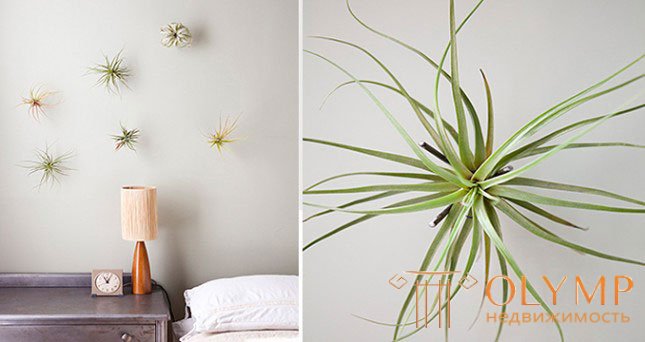
This is not an ordinary cactus, it is an exotic species from South America. Especially bold gardeners like to use the hanger as a holder for decorations, for example.
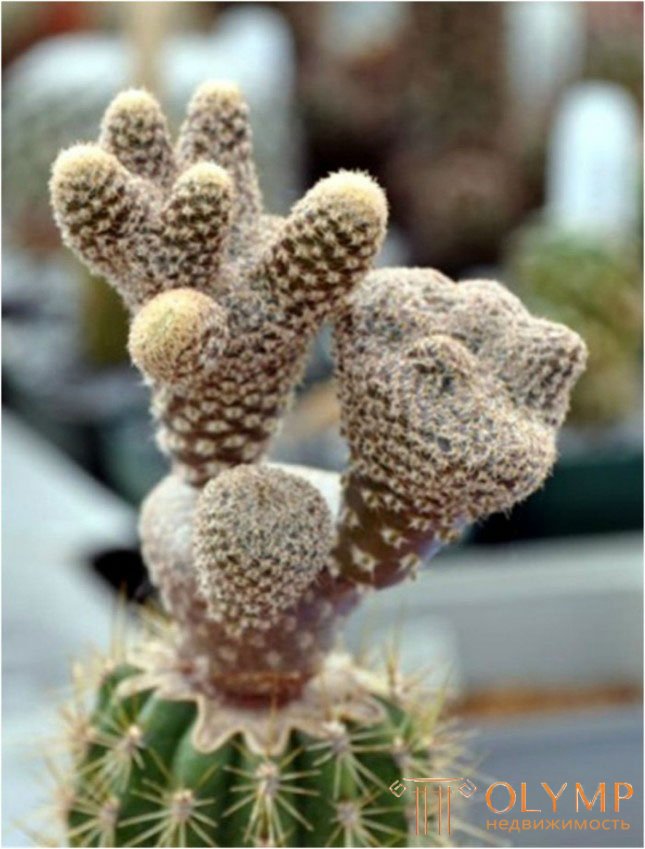
Originally from South Africa, this plant has an amusing wavy texture and an unusual shape in general.
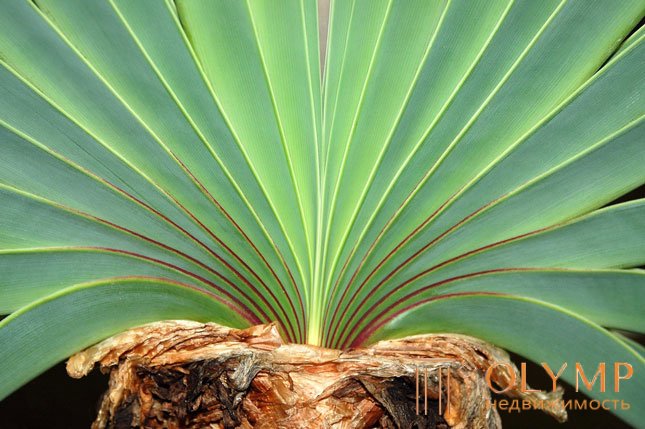
We do not know about you, but we really liked this purple-pink plant with an abstruse name.
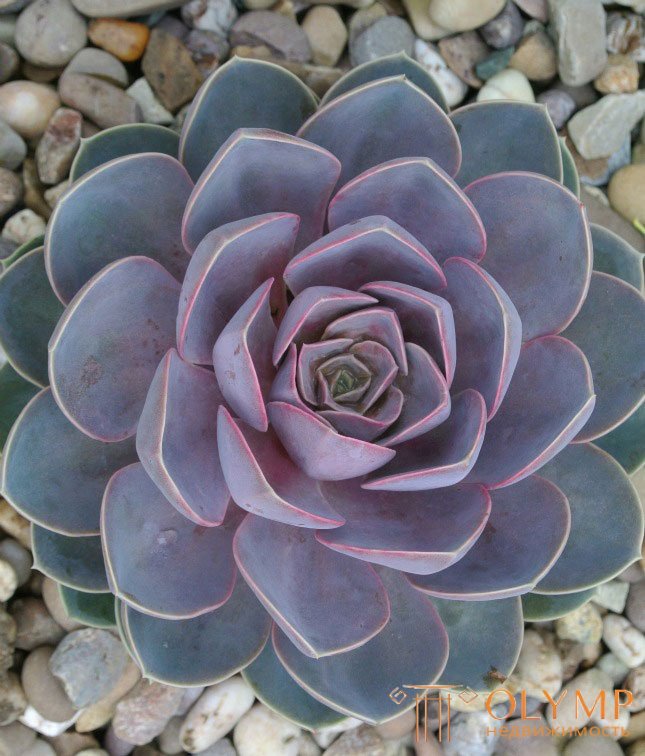
Patterned cacti for fans of "prickly and unpretentious pets."
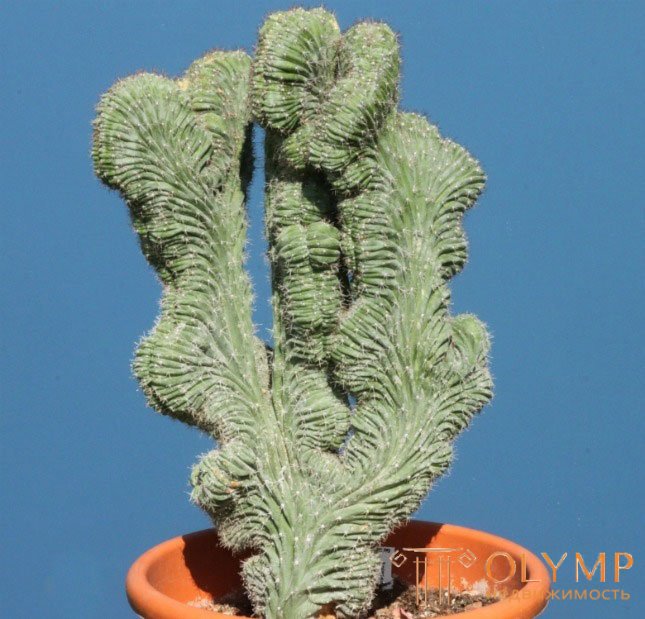
Here it is! Plus an extraordinary, prehistoric appearance.
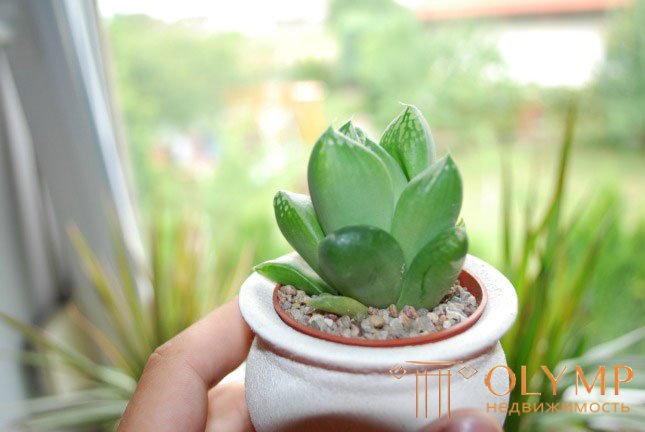
Delightfully unpretentious, living thanks to only the air ... and when the beauty blooms also a miracle!
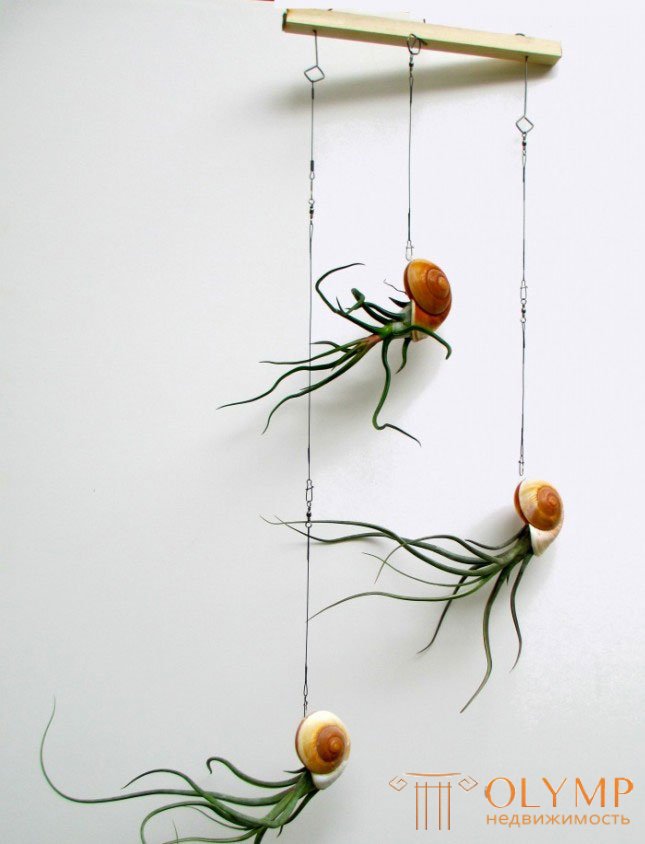
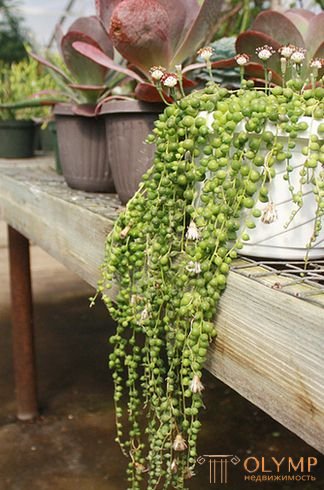
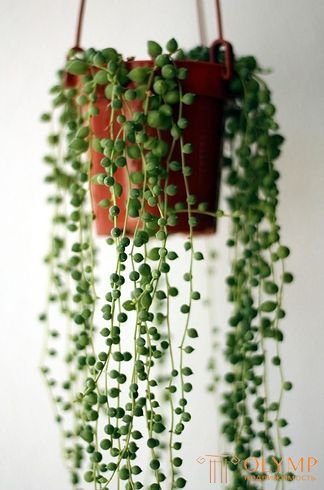
Rowley's dacha is an ornamental houseplant that is known for its original appearance. The shape of the plant is a long thin scourge with beads. It is for this reason that the godson has a second name - "string of pearls." Senecio Rowley suggests placing in hanging pots, as his growth is constantly striving downwards. In spring, the plant blooms with white inflorescences.
By the nature, Rowley's gardener resembles succulent plants, therefore it does not require special care. This plant prefers natural light without direct sunlight. With a lack of light, the plant changes its appearance and becomes shallow. Desired temperature: in summer - 22-25 ° С, in winter - 10-15 ° С. Lower temperatures can damage the plant and destroy it.
Senezio Rowley has no special requirements for air humidity, therefore it is enough to spray him from the sprayer occasionally. Watering plants in the warm season should be abundant. Remember that Rowley's godson is poisonous, so take care when handling it.
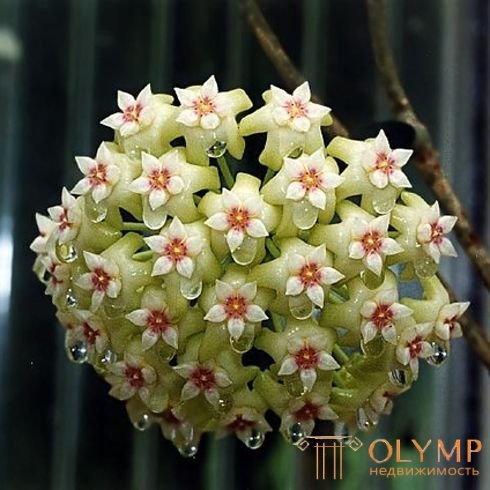
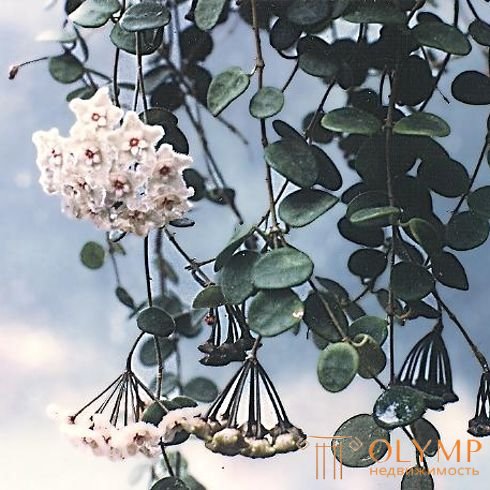
Hoya is a decorative flowering wax ivy that grows in the wild in tropical areas. In appearance, hoya resembles ivy with beautiful buds. There are a huge number of varieties of hoya, but they all do not require careful care at home. The plant prefers bright light, but does not tolerate active ultraviolet. The optimum temperature is: in the summer - 18-19 ° C, in the winter - 10-15 ° C. Watering hoi should be carried out as the soil dries completely, as the plant does not like stagnant moisture.
One of the features of hoyi is her love for “bathing”, which should be carried out 2 times a year. In the summer the plant is sprayed from the spray. Young individuals are transplanted once a year. More adults - once in 3 years. Hoi reproduction occurs by grafting or layering. Sprigs of plants pinch, and bloomed inflorescences are not cut off.
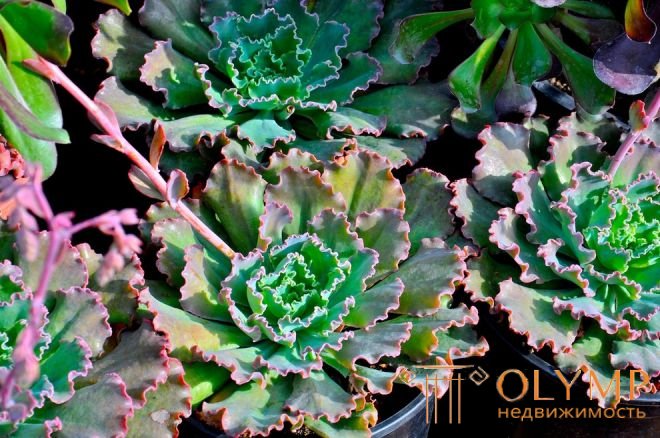
Watering of such succulents should be moderate, with partial drying of the soil. For stone roses, spraying is contraindicated, since echeveria likes dry air. Therefore, when watering is worth paying attention to the ingress of water into the flower outlet. Illumination is more preferable solar, with active ultraviolet rays. Juveniles require an annual transplant, while adults require it only when needed. With proper care, Echeveria bloom, creating a unique look.
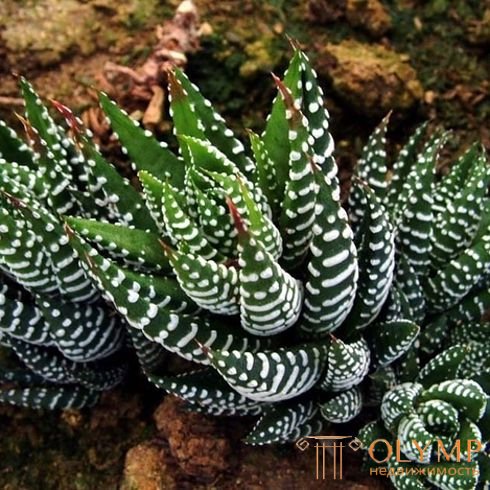
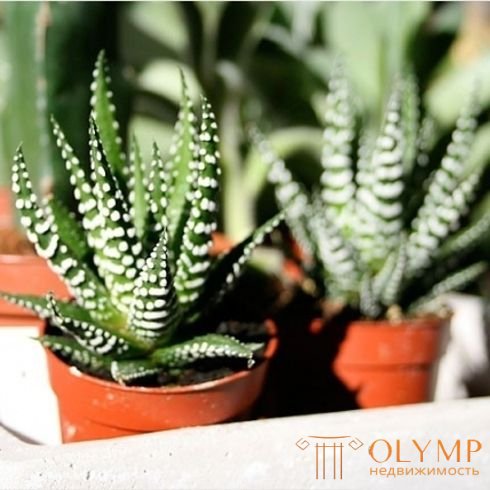
The unpretentious succulent cactus - havortia - is famous for its unusual color and leaf shape. Appearance is often reminiscent of a star or octopus with numerous tentacles. A distinctive feature of this plant is the presence of white bulges, grooves on the surface of the leaves, giving them a rough surface.
Among the houseplants, havortiya can be considered true long-livers, since with proper care their life span can reach 30 years. Hawortia prefers diffused soft light, but in the morning likes to soak up the sun. The optimum temperature for plant growth is: in the summer - 15-27, in the winter - 10-15 ° C. Watering havortiya carried out once a week after drying the top layer of soil. When watering, it is recommended to avoid water from entering the root outlet.
Air humidity is not critical for havortiya, therefore it is not necessary to spray the plant. Young plants are transplanted annually, whereas adults - 1 time in 2-3 years. Reproduction occurs with the help of shoots, cuttings or "kids."
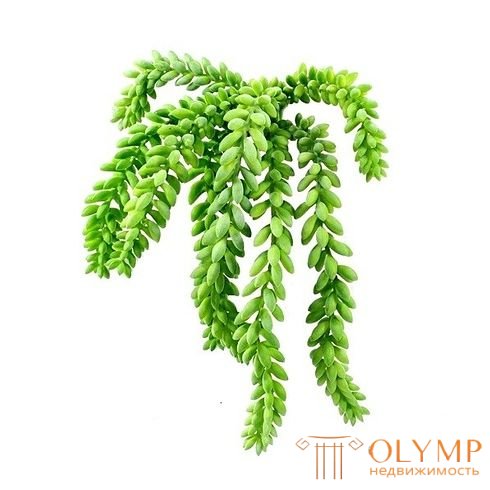
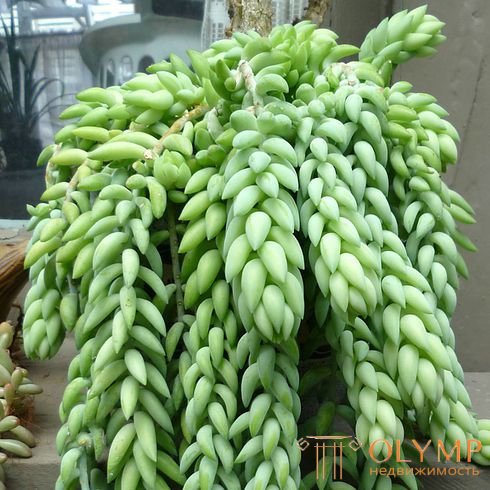
Sedum (Sedum) Morgana - a plant belonging to a group of ornamental succulents. Due to its unusual appearance in the common people it is called "donkey's tail", "monkey's tail", "creak", "feverish grass", "hernia grass" or "hare cabbage". Morgan sedum has a flowering period, but at home this is quite rare.
Externally, the plant is a stalk, densely covered with leaves in the form of pointed droplets with a wax effect. Branches rarely branch, often creep outside the pot. Therefore, Morgan stonecrop is ideal for pots.
Character demanding and capricious. Lighting prefers a bright, sunny with active ultraviolet. Temperature range can vary from 23-30 ° C. In the summer, prefers fresh air. Humidity for stonecrop should be moderate with periodic spraying. Watering is carried out carefully, as the soil dries.
An important feature of cultivation is the creation of comfortable conditions during the dormant period of the plant - from October to March. The plant should be in a room with a temperature regime of 8-13 ° C and a frequency of watering - 1 time in 2 weeks. Reproduction occurs with the help of a stem or leaf cutting. Transplantation perform only as needed.
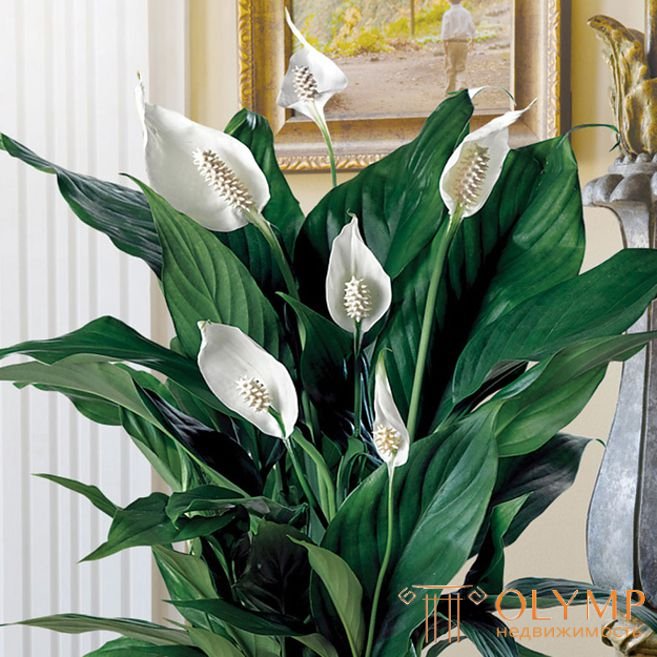
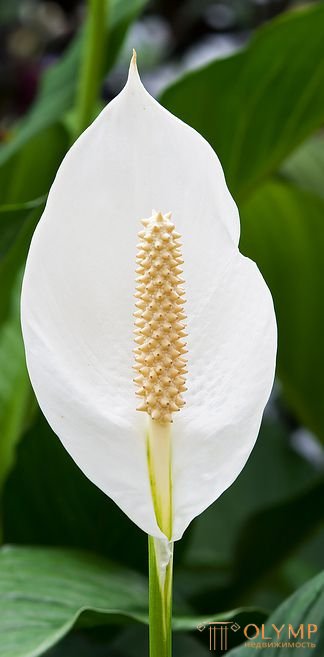
Spathiphyllum is considered unpretentious flowering plant. The people most often meet the name "White Sail" or "Female happiness." The appearance of the inflorescences resembles a yellow ear, covered on one side with a leaf. It has a small rhizome and large green leaves. In room conditions, Spathiphyllum prefers penumbral lighting without direct sunlight.
Watering plants produced as the drying of the top layer of soil. Spathiphyllum loves the air of high humidity, so it must be constantly sprayed. The preferred temperature is: in the summer - 20-25 ° С, in the winter - not lower than 16 ° С. Be sure to follow the drafts, as in the winter the plant almost does not tolerate them. Transplantation should be carried out annually at the beginning of spring and the overgrown individuals should be transplanted.
It is believed that during the flowering period the plant brings the energy of love and well-being to its owners.
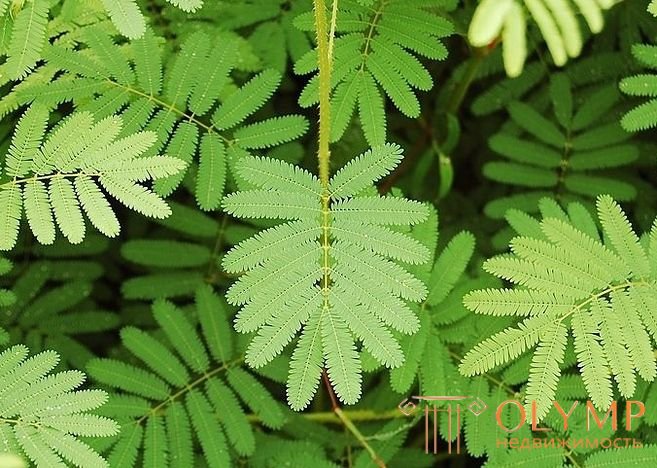
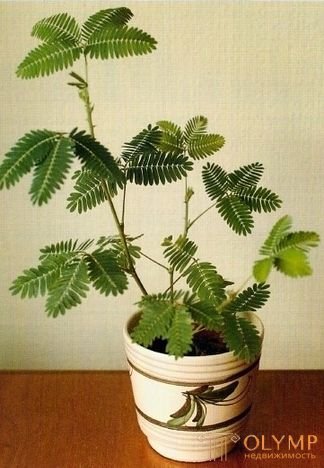
Bashful mimosa is a gentle indoor plant for connoisseurs of flowers. Mimosa received its unusual name due to the hypersensitivity of leaves, which fold even from the slightest touch, whiff or shaking. Mimosa is a herbaceous annual plant. The leaves of the bashful mimosa look like a fern with small spherical flowers.
Particular attention should be paid to ambient air humidity, as mimosa prefers a tropical climate. During flowering, the plant must be watered every other day, then monitor the condition of the soil. It should be slightly wet. Usually mimosa is not transplanted, as it is an annual plant.
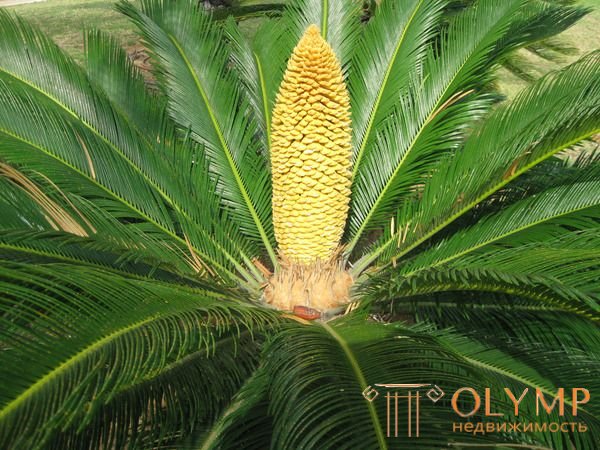
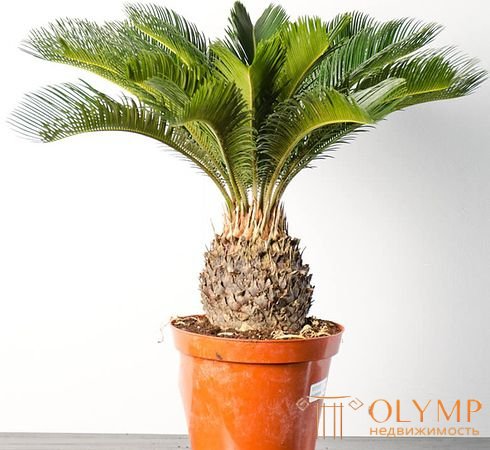
To create an amazing atmosphere of the sea coast in the apartment you will need to purchase a sago palm tree, which will become a bright representative among all the plants. Saga palm, or Tsikas, is considered a unique ancient plant with luxurious foliage growing from a thick trunk. In the wild, Zicas grows to 15 meters in height, in the home - about 50 cm. The main drawback of the sago palm tree is its slow growth and capricious nature.
Zicas prefers rooms with maximum lighting, but without hitting the active sun. The optimum temperature is: in the summer - 22-26 ° C, in the winter - 12-17 ° C. When watering it is necessary to take into account that the tusk does not tolerate excessive moisture and loves moderate watering. Therefore, before watering is to ensure sufficient dryness of the soil.
Palm loves a humid atmosphere and requires constant spraying of the leaves. During wetting and watering, moisture should be avoided on the stem of the plant to prevent root decay. This plant is transplanted once every 5 years. To carry out any activities with sago palm is necessary in gloves, as the stem of the plant contains toxic substances.
Что бы оставить комментарий войдите
Комментарии (0)